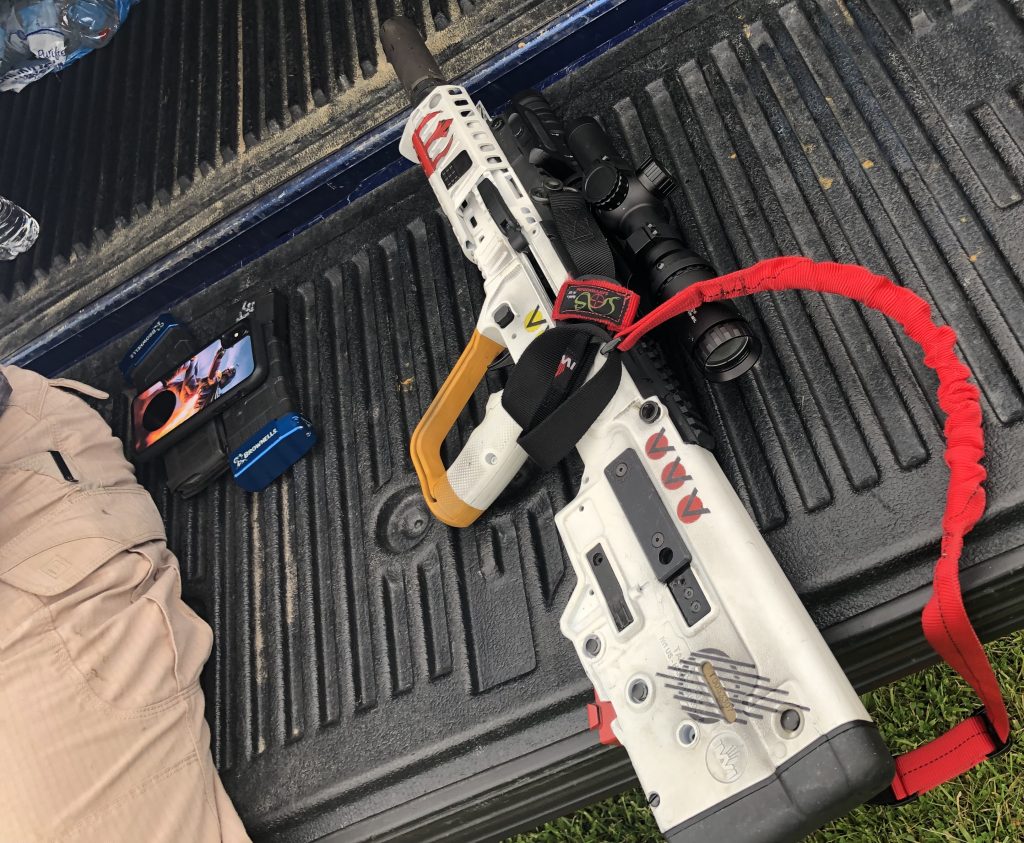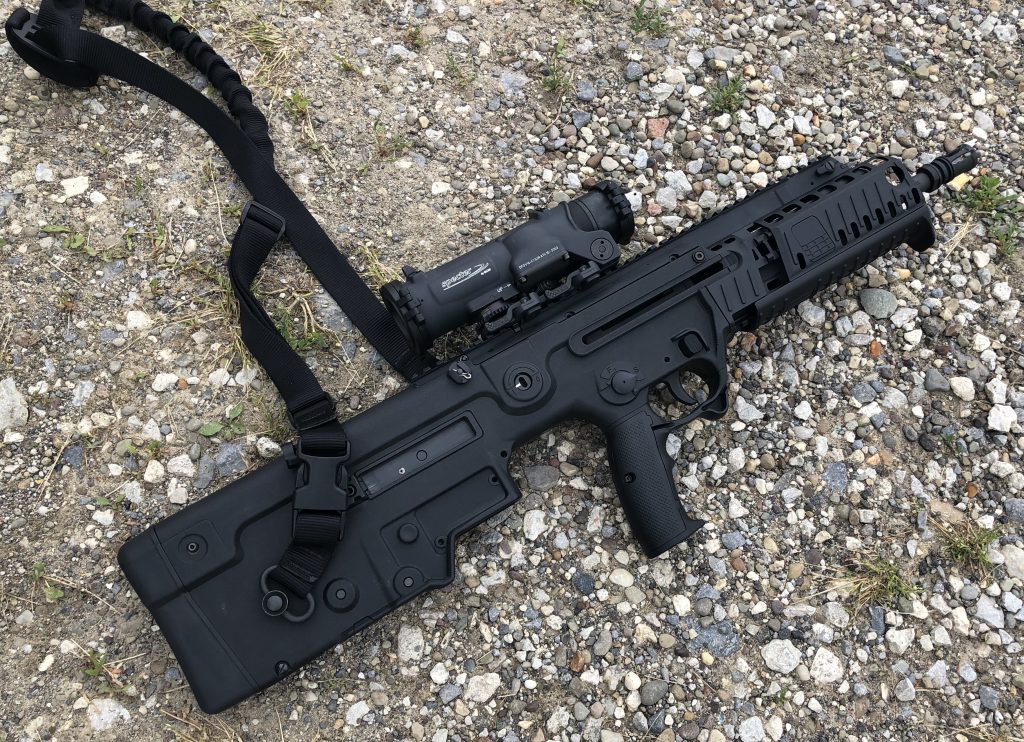
Are you afraid of the dark?
This isn’t an inquiry to be funny or snarky. It isn’t meant to be rhetorical either. Consider the genuine question to get the gears turning for you. Are you afraid of the dark? Not illogically irrationally afraid but, more than anything, do you recognize why you should respect the dark. Respect it and do something about the challenges it brings.
The dark is environmental sensory deprivation.
Noun: a process by which someone is deprived of normal external stimuli such as sight and sound for an extended period of time. (emphasis mine)
This sensory deprivation is a potentially lethal complication in a situation where you need as much information as you can acquire as quickly as you can process it, self defense. Regardless of time of day or location of the situation, when you turn down the lights things change. Depriving the eyes of the levels of light they need to provide you the information you need is a serious situation. Positive identification (PID) of threats and non-threats is the difference between saving your life, dying, or going to prison.
Just to put this into perspective, in a study of shootings by LEO organizations 77 percent of police shootings are believed to occur under some degree of diminished lighting. 77% chance your eyes are going to be challenged to do their job.
Tavor Night Operations Course: TNOC
Own an IWI Tavor or X95? This course is for you.
Don’t own an X95, Tavor SAR? This course is still for you.
The opportunities to fire your rifle under dusk and dark conditions are nearly nonexistent due to most locations range rules. TNOC isn’t just a skills course. The skills are almost entirely covered in T1 already, a prerequisite for this course is passing T1.

TNOC is a proofing and inoculation course as much as it is a skills course.
Proofing a System
A proofing course determines whether or not a theory is viable. The theory in this case is: This is my “Kit” and it will work in the dark.
The combination of rifle, optic, and light are a system that must be proofed in order to assure that you can work them on demand, avoid gear conflicts, and address malfunctions. All, again, while in the dark.
Inoculation for Environment
Night time is uncharted territory for many, under practiced for nearly everyone. Shooting on a bright or overcast day is one thing. Shooting in the dark with little in the way of ambient light and, for a bonus twist, in the wet/rain while the temperatures is below the dew point is a whole different animal.

Rebel 
Huey Green Machine 
Silent Shorty 
Doc Rocks 
Muahaha Elcan
Here’s how your TNOC experience will break down. It’s actually fantastic, you can sleep in during the course.
Training Day – 1
Arrival time will likely be around 1500/3:00pm local. Unlike Tavor Operator 1 you won’t be waiting long to shoot. Safety brief, zero check, and right into drills.

Crash course/refresh time of the following.
- Barrel/Sight relation – remember your offsets and distances
- Reloads – lots of reloads from bolt lock. Stimulus induced response.
- Positions and facing movements – foot work, safety, reduce injury chances
- Malfunctions – Hard and soft, you will clear so many of these. Stimulus induced response.
Ok, you now hate all these things because someone forgot to take the track off of repeat. But you are still having a great time. Why? You’re running the gun hard and that happens far too rarely. Also…
Stimulus
Induced
Response
Stimulus Induced Response
Now that I have said that four separate times in two paragraphs… Why that redundant?
We are about to lose the use of our eyes for most of the easy tasks we take for granted. Our lights will brighten up the night down range but they aren’t going to do anything for me chamber checking the X95. I better learn to feel what the rifle is telling me as much as you or I see it in good light. The drills you run will build that.
The single greatest stimulus drill we did, and we repeated it ad nauseum, was a seven round iteration that has 3 separate stoppages.
Multi-Stoppage Clearance Drill – AKA Everything is Horrible! Why is this Happening!?
What you need:
- Full Magazine
- Empty Magazine
- Dummy Round(s)
- Empty Shell Casing
Set it up:
- Take the empty magazine and load 2 rounds into it [Mag: 2 live rounds, 2 total]
- Load the dummy round [Mag: 2 live, 1 dummy, 3 total]
- Load 2 more live rounds [Mag: 2 live, 1 dummy, 2 live, 5 total]
- Load the empty case in to the magazine backwards, primer end facing the chamber, slide it all the way to the back of the magazine. The case neck (hole where the bullet was) will be sitting above the rest of the rounds’ rims and primers in the magazine. [Mag: 2 live, 1 dummy, 2 live, 1 backward empty, 6 total]
- Take your full magazine and load your rifle
- Swap the full magazine for the stacked magazine of malfunctioning hell [Mag: 2 live, 1 dummy, 2 live, 1 backwards case, 1 live in the chamber, 7 total]
- Place the full magazine in a pocket or pouch as your empty gun/emergency reload
We used steel targets for this iteration, I recommend them for the instant feedback. Distance will be 50 yards and positions will be varied, not just strong side.
This is designed to get crazy…
Course of fire goals:
- 7 hits on target
- Fix/Clear all stoppages
- End the drill with a ready rifle
Course of fire progression:
- On the command, engage the target for 7 hits
- After the first round fired the rifle will go to a hard stoppage: simulating a double feed, stovepipe, etc.
- Retain that magazine and clear the stoppage. Additionally, seek cover if safe and available to do so for your range.
- Reload with the retained magazine. Continue the drill.
- After 2 more shots the rifle will load the dummy and go to a soft stoppage: simulating failure to fire.
- Tap-Tug-Rack and continue the drill.
- After 2 more rounds the rifle runs empty. Reload.
- 2 more rounds will get you your 7th hit if you had no misses. Remember the drill is 7 hits, complete the drill.
The rifle will stop 3 times, more if there is an additional stoppage or you fail to clear one properly.
The point of this drill is to ingrain in you, the rifle’s operator, what the four major physical stimuli the rifle gives you feel like so that you can respond accordingly. Proper function, hard stoppage, soft stoppage, and empty.
This drill can easily get inside a shooters head. As a shooter worries about what’s coming next they miss what the immediate problem is. Focus on the immediate need of your rifle and the drill runs smoothly. If you’re shooting, shoot and hit. If the rifle stops fix it. You know a stoppage is coming but do your best to forget that and feel what the rifle tells you.
Fast misses and record time improperly cleared guns don’t award any points or solve your problems. Take the time and do them correctly.
“Lunch”
Or whatever the 9pm lunch equivalent is.

Eat, hydrate, rest… and talk gear.
One of the greatest opportunities you get in a course like this, where gear is a critical focus learning objective, is the opportunity to get first hand knowledge from guys like Tom and the other shooters on what they run and why.
We covered how the human eye responds to low light/no light. The peripheral vision is the stronger at night. White light nukes your night vision. When to use light is as important a question as how to. We conducted another once over of gear, controls, and placement with the downtime too.
Lights On
Weapon Mounted Lights (WMLs) are specialty tools. They have specific jobs and will, to a degree, be tailored for that job. So when considering a light here are a few guidelines. Note: You need a separate handheld light for your administrative functions. My choice there is still the ASP Tungsten.
- Lumens: Recommended 500+, Minimum 300
- Run Time at Maximum Output: 60 minutes +, Minimum 30 minutes
- Controls: Momentary and Constant On, Disableable “Rave” setting… strobe shouldn’t exist on weapon lights
There’s far more that can be covered on specific lights for specific jobs, what light configurations work well in what roles, and the advantages and limitations of different specific lights. However the above is a starting point that should get you a useable light for the home defense role and out to about 50 meters.
Lights Off

Daylight gone. Weapon lights on.
All those daylight drills, including that multi-stoppage clearance nightmare, now shooting them all in the dark. The humidity was high, it was lightly raining, and the temperature dropped below the dew point… You want to see if your light and optic works? This is where that happens.
Rain obscures optical glass and optics have coatings that do darken them. The Vortex UH-1 “Huey” running on my borrowed X95 is not my favorite in the dark. In fact the experience killed all the interest I had in that optic. The Streamlight HL-X though, proved out well. Overall two lights failed out during the course, an oddball inside the handguard job that didn’t work for its operator to ID or engage any targets and another HL-X for an unknown issue. The HL-X that replaced the down one worked just fine and, if I recall correctly, the handguard oddity was supplanted by an OLight that also had no issues.
For science, and shits and giggles, I pulled out a different rifle at midnight with a Surefire M600DF and an ACOG. Of the three systems I ran that night, that combination was without a doubt my favorite. It proved out and will be a significant influence on the operational layout of the X95 SBR.
We rounded it out with a muzzle device demonstration between 4 common commercial types: A muzzle break (OSS), a compensator (BCM Mod 1), a flash hider (A2), and a suppressor (OSS). Muzzle devices are an important consideration when it comes to what you expect your rifle to do, choose accordingly.
…and there we called it a night.



